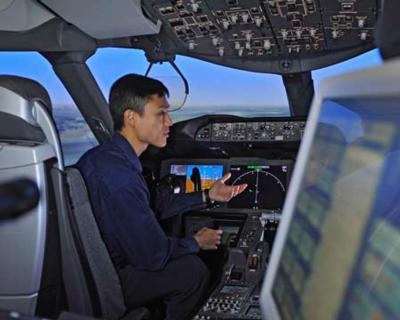Tue, Aug 28, 2012
Region Leads Global Need For Commercial Airline Pilots, Technicians, According To Boeing Study
The Asia Pacific region will require hundreds of thousands of new commercial airline pilots and maintenance technicians over the next 20 years to support airline fleet modernization and the rapid growth of air travel, according to the 2012 Boeing Pilot & Technician Outlook.

The report anticipates a need for 185,600 new pilots and 243,500 new technicians in the Asia Pacific region through 2030. China will have the largest demand in the region, needing 71,300 pilots and 99,400 technicians over the next 20 years. "This great need for aviation personnel is a global issue, but it's hitting the Asia Pacific region particularly hard," said Bob Bellitto, global sales director, Boeing Flight Services. "Some airlines are already experiencing delays and operational interruptions because they don't have enough qualified pilots. Surging economies in the region are driving travel demand. Airlines and training providers need new and more engaging ways to fill the pipeline of pilots and technicians for the future."
In June, the company signed a Memorandum of Understanding with the Indonesian Ministry of Transportation to jointly work to establish aviation training programs. Boeing is also expanding partnerships around the world to develop a global flight school network to better supply capable and well-qualified aviation personnel.
The Boeing outlook projects that North East Asia will need 18,800 pilots and 26,500 technicians over the next 20 years. South East Asia will require 51,500 pilots and 67,400 technicians. The Oceania region will need 12,900 pilots and 17,100 technicians and South West Asia will need 31,000 pilots and 33,100 technicians. "As an industry, we have to get the next generation excited about working in the field of aviation," Bellitto said. "We are competing for talent with alluring hi-tech, software and mobile companies and start-ups. We're working hard to showcase our industry as a truly global, technological, multi-faceted environment where individuals from all backgrounds and disciplines can make a significant impact."
The Asia Pacific region also leads the demand for new commercial airplane deliveries over the next 20 years, with 12,030 new airplanes needed by 2031 according to Boeing's 2012 Current Market Outlook.
(Image provided by Boeing)
More News
With Testing Soon Complete, Launch Preparations Begin in Earnest Sierra Space's Dream Chaser has been put through the wringer at NASA's Glenn Armstrong Test Facility in Ohio, but w>[...]
Takeoff Roll The process whereby an aircraft is aligned with the runway centerline and the aircraft is moving with the intent to take off. For helicopters, this pertains to the act>[...]
“We’re proud of the hard work that went into receiving this validation, and it will be a welcome relief to our customers in the European Union. We couldn’t be mor>[...]
"Aircraft Spruce is pleased to announce the acquisition of the parts distribution operations of Wag-Aero. Wag-Aero was founded in the 1960’s by Dick and Bobbie Wagner in the >[...]
IDENT Feature The special feature in the Air Traffic Control Radar Beacon System (ATCRBS) equipment. It is used to immediately distinguish one displayed beacon target from other be>[...]
 Sierra Space Repositions Dream Chaser for First Mission
Sierra Space Repositions Dream Chaser for First Mission ANN's Daily Aero-Term (05.10.24): Takeoff Roll
ANN's Daily Aero-Term (05.10.24): Takeoff Roll Aero-News: Quote of the Day (05.10.24)
Aero-News: Quote of the Day (05.10.24) Aero-News: Quote of the Day (05.11.24)
Aero-News: Quote of the Day (05.11.24) ANN's Daily Aero-Term (05.11.24): IDENT Feature
ANN's Daily Aero-Term (05.11.24): IDENT Feature



